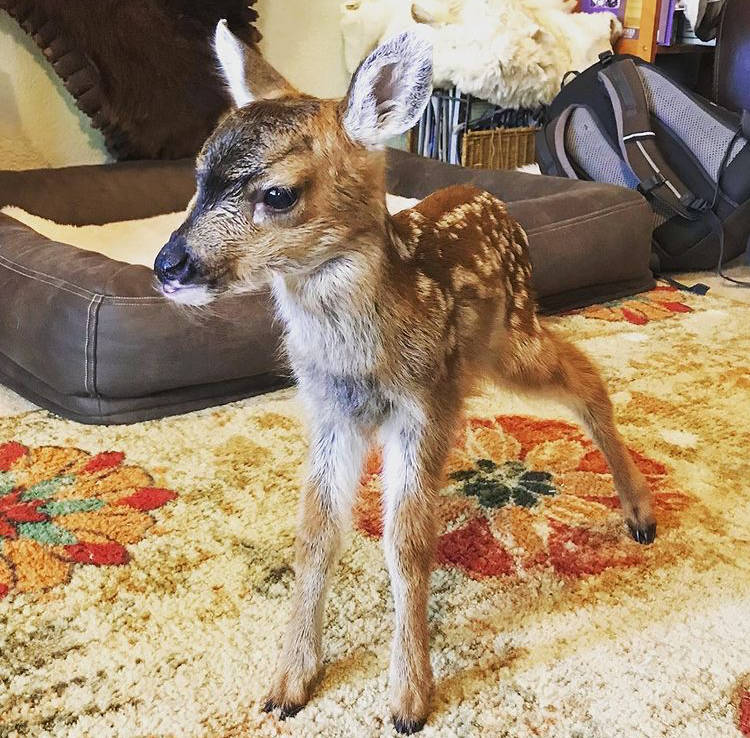While state wildlife officials were able to rehome a baby deer turned over to an Alaska Wildlife Trooper, they cautioned that such cases usually don’t have a happy ending
“We don’t encourage people to pick up what they perceive as orphaned animals in the wild because they may not be orphaned,” said Steve Bethune, the Alaska Department of Fish and Game’s Unit 4 area management biologist, in a phone interview. “It’s more of a kidnapping.”
This Sitka black-tailed deer fawn found on Kruzof Island went to a new home at the Alaska Wildlife Conservation Center near Portage on Monday night, but wildlife troopers and scientists caution the public to leave baby animals be.
Bethune said that he usually gets about one baby animal a year from someone “rescuing” them, ranging from deer to bears or mink. While they were able to find a spot for this deer, named Iris for Iris Meadows on Kruzof Island, usually, the animals have to be euthanized.
“We just want the public to be very clear that baby animals should be left where they are,” said Alaska Wildlife Trooper Kyle Ferguson, whose family took the fawn in while they were seeing if it could be rehomed. “The mother knows what they’re doing.”
The behavior of tucking baby deer away while the mother forages is not uncommon, Bethune said. Deer usually give birth to one or two fawns, Bethune said.
“The concept is that the does will cache their fawns for sometimes several hours while they’re foraging,” Bethune said. “Even if you don’t see the doe nearby, it’s most likely not orphaned or not abandoned. Please leave those fawns alone.”
The fawn, likely less than a week old, still had its umbilical cord attached, Bethune said.
“It was less than five pounds,” Bethune said. “It was about cat-sized.”
Once they had a new place for it to live lined up, Bethune said, they put it in a dog kennel and shipped it via air cargo, a standard practice.
“We don’t just give anybody a wild animal,” Bethune said. “It’ll live there forever.”
Sitka black-tailed deer are widespread across Southeast Alaska, not just Sitka, and are smaller and stockier than the Columbia black-tailed deer of the Pacific Northwest, according to ADF&G.
• Contact reporter Michael S. Lockett at (757) 621-1197 or mlockett@juneauempire.com.

